Alice Mary Chambers.
English ( b.1855 - d.1920 ).
Portrait Of Rebecca Porter Paddon 1850 – 1915 (nee Somerset).
Red Chalk On Paper.
Signed with Monogram Upper Left.
Image size 17.9 inches x 14.8 inches ( 45.5cm x 37.5cm ).
Frame size 25 inches x 21.9 inches ( 63.5cm x 55.5cm ).
This original sanguine red chalk portrait drawing on paper is by the English female artist Alice Mary Chambers and dates from around 1880 to 1885.
The drawing is presented and supplied in a glazed frame dating from the 1990s which uses a backboard and mount from the 1960s (which is shown in these photographs).
This antique drawing is in very good condition. It is supplied ready to hang and display.
The drawing is signed with the artist’s monogram upper left.
Provenance: By descent through the sitter’s family.
Alice Mary Chambers was a fascinating and significant figure in British artistic circles, and part of the higher echelons of the ‘aesthetic’ phase of the Pre-Raphaelite movement of the late nineteenth century. A contemporary of Evelyn De Morgan, Kate Bounce and Marianne Stokes, she was also a close friend of Charles Augustus Howell through whom she met Algernon Swinburne, Whistler and Dante Gabrielle Rossetti. The influence of Burne-Jones, Holman Hunt and E.R. Hughes can also be seen in her highly acclaimed red chalk studies and watercolour works.
Alice was born in Harlow, Essex, in 1855, the daughter of the Rev John Charles Chambers, a controversial figure in the Anglican Church, and his wife, Mary. Their two older children had both died in infancy in 1852. At the time of her birth, Alice’s father was vicar of St Mary Magdalene in Harlow, but in 1856 he became perpetual curate of St. Mary’s, Crown Street, and warden of the House of Charity, both in Soho, London, and he retained these positions until his death. He has been described as turning St Mary’s into a model for managing a parish along ritualist (Anglo-Catholic) lines. By consent, he and his wife separated ‘each to live crypto-monastic lives of celibacy and charity’.
Census records show that in 1861 Alice and her mother were living at Fernley Bank, West Hill, Sydenham, a school for young ladies run by her mother’s sisters, Sarah, Martha and Ann, and at which her mother also taught.
By 1871 Alice and her mother were again living with her father, in Bloomsbury. However, within the next three years, both her parents died. In his will her father made his brother, who was vicar of Hook in Yorkshire, guardian of Alice and left the income from a substantial sum for her maintenance and education. It appears this enabled her to complete her studies.
Alice had emerged as an artist by 1875, when she produced her earliest dated work. She exhibited at the Royal Academy (9 works), and the New Watercolour Society and the New Gallery, London between 1881-1894. She specialised in drawings of female figures and mythological and orientalist subjects. She also provided frontispiece illustration for Mary Hullah’s The Lion Battalion (1885), a collection of stories for children. Chambers signed her work with a monogram which is reminiscent of Rossetti’s, and often used a leafy backdrop.
By 1881 Chambers had established a close relationship with the artists’ agent, Charles Augustus Howell, who is considered one of the most colourful characters of the Victorian age. Howell was the friend and agent of Dante Gabriel Rossetti, and later secretary to John Ruskin. He had a mixed reputation during his lifetime, as both a ‘gifted raconteur’ and a ‘prodigious liar’. Chambers became a member of a close circle around Howell, that also included his wife, Kitty, and his mistresses, the artist Rosa Corder and Clara Vaughan. It has been suggested that Chambers was the third of these mistresses, though she somehow managed to retain her respectability.
Chambers was at her most artistically productive during the years of her friendship with Howell and his circle, benefitting from the support of a like-minded community. By 1881 she was living at 17 Red Lion Square, an address with significant Pre-Raphaelite associations – and described herself an “artist in drawing and painting’. Previous lodgers at 17 Red Lion Square included Dante Gabriel Rossetti, W.H.Deverall, and Edward Burne-Jones. It was also the premises at which (William) Morris, Marshall, Faulkner & Co established their first headquarters.
When Howell died in 1890, he and Chambers were living at the same address in Southampton Row, and possibly in a ménage with Rosa Corder. Chambers was obviously a most trusted friend as she was named as one of the two executors and trustees of his will, along with the auctioneer, Frederick John Bonham, and as one of the two guardians of his daughter by Kitty, along with Corder. It was Chambers who made the arrangements for Howell’s funeral and the sale of his estate.
Following Howell’s death and through the 1890s Chambers appears to have led a peripatetic life and spent much of her time in France and Spain
In 1901 she was living at 15 Ann’s Villas, in West London, and described herself in the census at living on her own means, rather than as an artist. from that time, she retained one or more addresses in London, but spent most of her time in a cottage in Sussex, or abroad in Italy or Spain.
In 1913 Chambers donated Dante Gabriel Rossetti’s plaster death mask to the National Portrait Gallery.
Alice Chambers died at Pomona House, Fulham on 5 May 1920.
There is a tantalizing link between the artist and the sitter of this drawing; they were both remarkable women in their time, with only five years between them in age, and they had the same lifespan of 65 years. They would have mixed in similar social circles and from what is known of their individual lives it is easy to imagine that they would have admired and respected each other. They obviously spent time together when Rebecca sat for her portrait. from the appearance of the subject, it can be reasonably estimated that the picture was created around 1880-85, when the artist would have been around 25-30 and the subject around 30-35. There are two likely circumstances in which this picture may have been commissioned. The first is the occasion of the marriage of Rebecca to her second husband, art collector Samuel Paddon, in 1879. In this scenario, this would have been a romantic gesture, to capture the beauty of the bride. The second scenario is a more pragmatic one; in 1885, six years after marrying Rebecca, Samuel Paddon sued the infamous artist’s agent Charles Augustus Howell. As a close friend, and possibly lover of Howell, Chambers provided promissory notes to help settle the claim. So, this portrait may have been undertaken as part of that settlement. Whatever the circumstances of its creation, this drawing demonstrates the extraordinary skill of one enlightened young woman by capturing the spirit of another.
This truly beautiful original red chalk drawing on paper by Alice Mary Chambers (1855-1920) is a half-length portrait of Rebecca Porter Paddon, nee Somerset, (1850-1915). It is signed with the artist’s usual monogram in the upper left section. Chambers was well-known for her red chalk studies, and this is a very fine example of her work.
The beautiful young woman who is the subject of this drawing is Rebecca Porter Somerset Paddon and her own story merits telling too:
Rebecca was born at Wootton Bassett in Wiltshire in 1850, the daughter of Edmund Thomas Somerset and Mary Ann Somerset. She married Charles John Paddison on 24 June 1874, but three years later she filed for divorce on the grounds of his cruelty and adultery. She also sought custody of their son, born in 1875. The divorce became final in 1879. Until the 1857 Matrimonial Causes Act it was essentially impossible to obtain a divorce without the passage of a private Act through Parliament. Even after 1857 divorce was extremely rare in England, and for a woman to divorce her husband was virtually unheard off. The fact that Rebecca was courageous enough to initiate and see this process through speaks volumes of her character.
Two years after her divorce Rebecca married again, on 17 May 1879. Her second husband, Samuel Wreford Paddon was a diamond merchant and art collector. They went on to have three children together ; Eva, Stanley and Philip. Samuel Paddon was an associate of Charles Augustus Howell, and through him was introduced to Whistler. At this time the Paddons were living in Reigate, Surrey. Rebecca is known to have liked pastel drawings, and bought one from Whistler, possibly from the Venice Pastels exhibition of 1881. During the 1880s the Paddons lived at 55 Earls Court Square, London. Samuel Paddon eventually fell out with Howell over some black Chinese ware he had bought from him, which Howells had described as very rare. However, Paddon had discovered the same pots in an Oxford Street shop for very little. There was also a dispute, published in 1882 in correspondence known as the Paddon Papers: The Owl and the Cabinet. This concerned the ownership and whereabouts of a Chinese cabinet. This marked the end of relations between Paddon and Howell. In 1885 Paddon took legal action against Howell for fraud (and Alice Mary Chambers provided promissory notes on behalf of Howell.).
Rebecca Paddon died on 9 August 1905 (aged 54-55) in Hamstead in the borough of Camden, London. She is buried at West Norwood Cemetery, Lambeth.
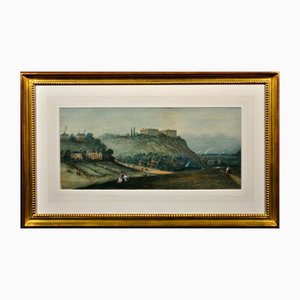
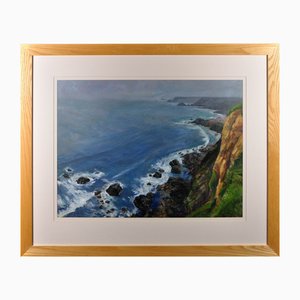

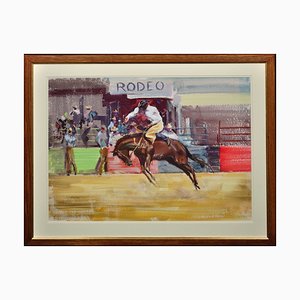
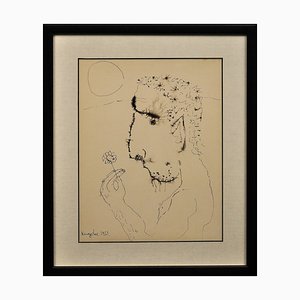
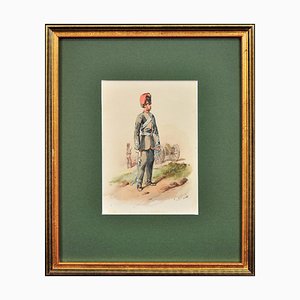

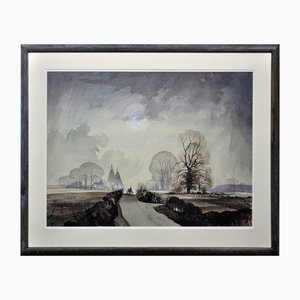
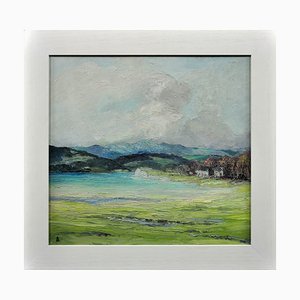


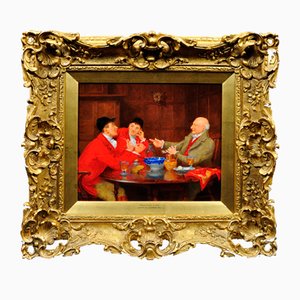

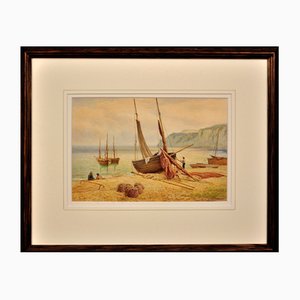
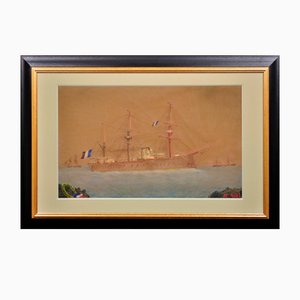

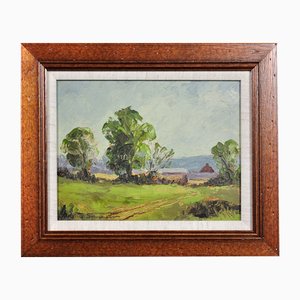
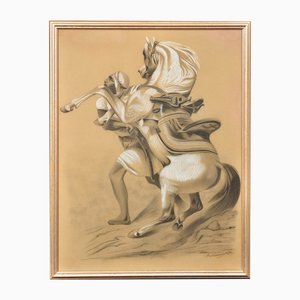


Get in Touch
Make An Offer
We noticed you are new to Pamono!
Please accept the Terms & Conditions and Privacy Policy
Get in Touch
Make An Offer
Almost There!
To follow your conversation on the platform, please complete the registration. To proceed with your offer on the platform, please complete the registration.Successful
Thanks for your inquiry, someone from our team will be in touch shortly
If you are a Design Professional, please apply here to get the benefits of the Pamono Trade Program